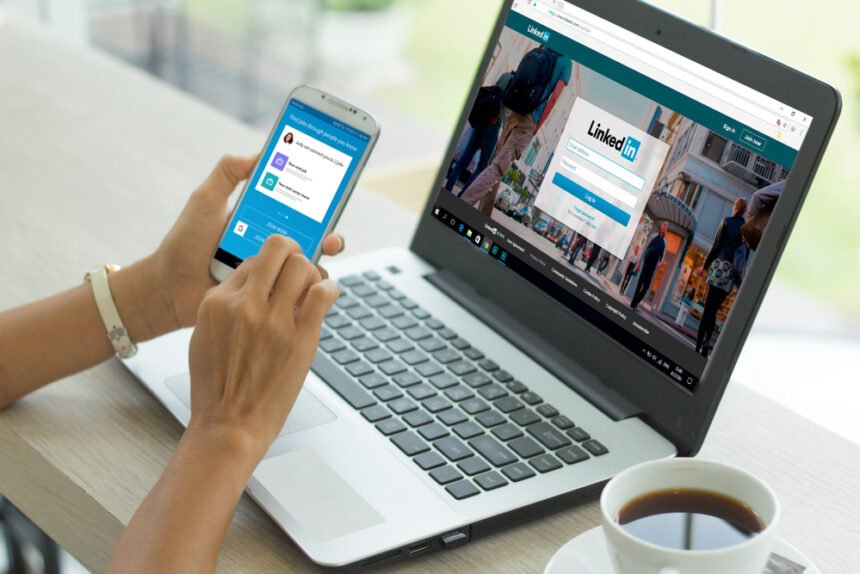Big data has become a very important part of modern marketing practices. More companies are using data analytics and AI to optimize their marketing strategies. This is especially true for companies using digital marketing practices, such as social media.
LinkedIn is one of the platforms that helps people use big data to facilitate online marketing. You can use their sophisticated analytics dashboard to improve your marketing strategies. Sprout Social has a blog post on accomplishing this.
However, there are other ways to use big data to get the most of your LinkedIn marketing strategy. One option is to use data analytics to improve your LinkedIn Ads targeting.
Data Analytics Can Improve the Performance of Your LinkedIn Advertising
It is well known that LinkedIn is built on big data. This creates a lot of advantages for its advertisers.
LinkedIn is essential for any business focusing on B2B outreach or trying to reach decision-makers in other organizations. With a formidable strategy, you can target your ideal audience, convert them, and increase sales. Fortunately, including LinkedIn’s audience targeting options in your marketing strategy helps you optimize your budget and reach potential clients and audiences with higher chances of converting.
Consequently, this article discusses six targeting options on LinkedIn and how you can use them to drive better results in your campaign strategy. You will get a lot more value out of them by using big data to improve your targeting strategies.
What Are the LinkedIn Audience Targeting Options?
Most experienced digital marketers are familiar with different targeting options across several social networks. They also realize that data analytics helps you improve your digital marketing strategies. Although most of these social platforms allow you to target people based on demographics or interests, LinkedIn retargeting options do more.
This section looks at the six LinkedIn targeting options available, including the following. If you pay close attention to the data in your reporting panel, then you can optimize your ad targeting for optimal conversions.
#1 – Location
LinkedIn makes the location targeting option mandatory for all ads. When using this option, your targeting can be specific or broad. For example, targeting people by city or metropolitan area is specific, while targeting people by state or country is broad.
Furthermore, with the location targeting option, you can reach people based on their IP address or the location listed on their profile. Also, if you are trying to reach people unfamiliar with your business, this targeting option allows the exclusion of locations.
You want to look at the data in your reporting panel. You may be surprised to find some regions convert much better than others, which will help you optimize your campaigns best. Always let your data guide you.
#2 – Company
One of the biggest benefits of the data infrastructure provided by LinkedIn’s marketing platform is that it allows you to target different companies. LinkedIn has extensive data on the companies in its network.
You can actually target your ads to people working at different companies. If you track your conversion data carefully, you will see which companies tend to drive the highest conversion rates.
Unlike Location, Company is an optional targeting method, and it contains several other options. These options include company connections, name, industry, size, and followers. Now, let’s look at these.
Through the company connections targeting option, you can reach any 1st degree employee connections at the companies you select. However, you can only use this option for companies having more than 500 employees.
Company name targets users based on their listed employer. The targeting option focuses on the company employees who maintain LinkedIn pages.
The company industry targets the primary sector where a user is employed, while company size targets users based on the size of the company that employs them. Similar to the company name option, company size is based on the number of employees listed on the company’s LinkedIn page.
Furthermore, the company followers targeting option focuses on people following your LinkedIn page. Therefore, before using this targeting option, you have to link your ads account to your LinkedIn page. Otherwise, your ads will reach both your followers and non-followers.
#3 – Demographics
LinkedIn demographics targeting option has two categories – member gender and member age. Member gender depends on what a user puts on their profile, while member age estimates the user’s profile information.
Data-driven marketers will take the time to review their conversion data to see which genders are most likely to convert. They can also use data mining to take a deeper look at the factors that drive conversions. They might find that women in some regions or age groups convert better than men with similar demographic factors and vice versa. You don’t want to make blind demographic targeting decisions without detailed data to guide you.
#4 – Education
The education targeting option targets users based on their field of study, degrees, and member schools. The field of study category focuses on a member’s degree’s major area of study. This option also targets people based on their selected degrees.
On the other hand, member schools target schools, colleges, or universities where users have completed courses. At the same time, degrees let you target the users based on their achieved rank at a learning institution.
You will also want to use data analytics to get better insights into the behaviors of people with different educational backgrounds. You will be able to make better data-driven decisions about your educational targeting. For example, you might find that STEM majors convert very well, while people with degrees in liberal arts do not. Nuanced insights like this can be derived from data analytics, which is better than just haphazardly targeting anyone with a bachelors degree.
#5 – Job Experience
Like the company targeting option, job experience also has several options for targeting users. Through job experience, you can target users based on their job functions. Please note that the job function is a standardized grouping of the job title a user enters.
Other targeting options under job experience include job seniority, job title, member skills, and years of experience.
Job seniority targets users based on their rank and position in their current position, while job title targets users based on their currently listed title. Fortunately, when users update their profile roles, LinkedIn algorithms group the titles and organize them into standardized ones.
The member skills function targets users with relevant keywords in the skills section indicating their expertise in such areas. This option is broad, and it includes skills entered by members, the skills they mention in their profile text, and the skills inferred based on what they list.
In addition, the years of experience option target users based on their accumulated years of experience. Because experience gaps may affect your ads, LinkedIn excludes them. Furthermore, the platform does not double count overlapping experiences.
#6 – Interests and Traits
The interests and traits targeting option reaches users based on shared group interests and individual member interests and traits. It is important to note that users’ interests and traits depend on their profile information, online engagements, and actions.
Data analytics can also give you more insights into the behavior of people with different traits and interests. You should keep detailed records, since there are so many variables to look at.
Use Data Analytics to Optimize Your LinkedIn Ads
There are several ways of targeting users with LinkedIn ads. Because of the several ad formats available, you can be creative with your ads, creating the ones suiting your target audience.
You don’t want to make these decisions without detailed insights derived from big data. Data analytics technology can make it a lot easier to get a high ROI from your LinkedIn Ads.
Furthermore, the audience targeting options discussed allow you to reach different users with higher chances of conversion. Nevertheless, you have to be strategic, flexible, and learn what works best for your business.










